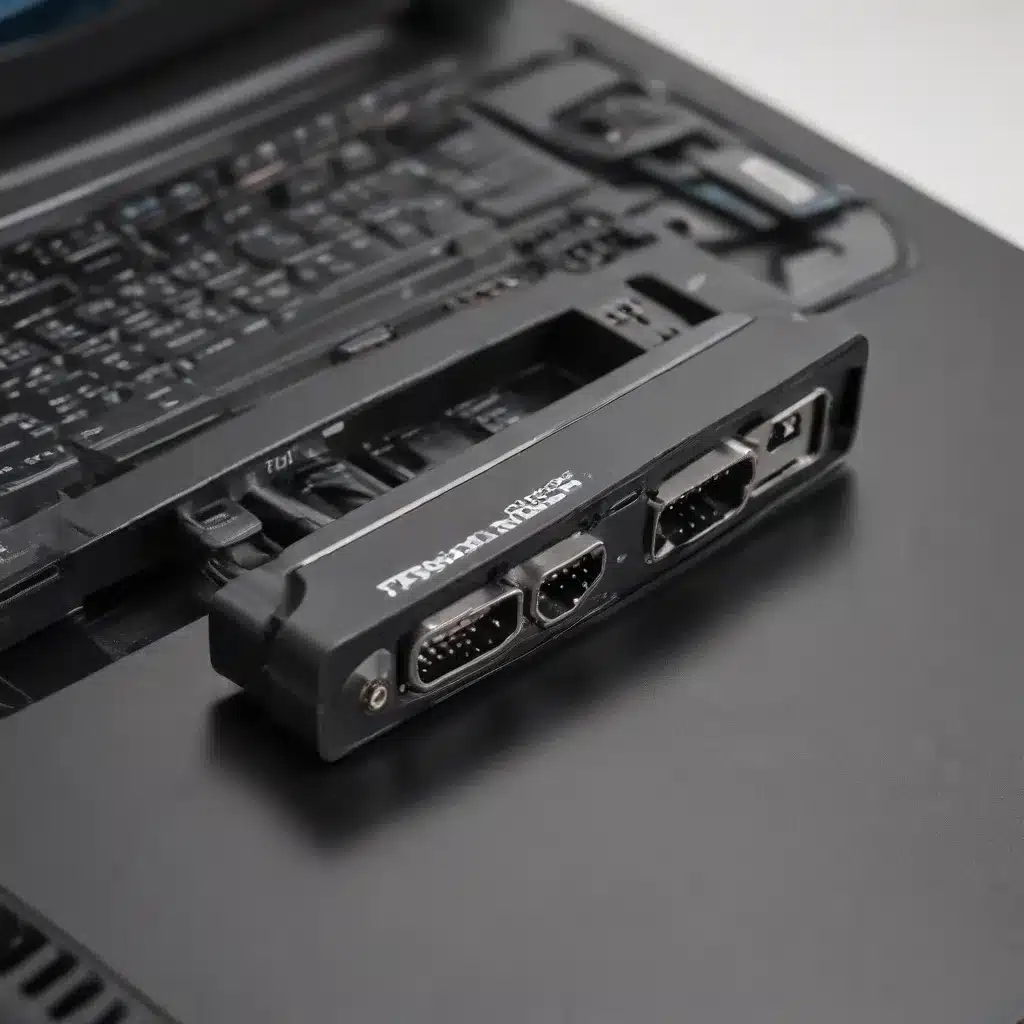
In the ever-evolving world of laptops, the ability to seamlessly connect a wide range of peripherals and accessories has become increasingly crucial. Whether you’re a busy professional, a content creator, or a tech-savvy student, understanding the various ports and adapters available on your laptop can be the key to unlocking its full potential. In this comprehensive guide, we’ll delve into the world of laptop connectivity, exploring the different port types, their capabilities, and the best practices for using adapters to expand your device’s functionality.
The Importance of Laptop Ports and Adapters
As laptops continue to become thinner and more portable, manufacturers have had to make tough decisions about the number and type of ports they include. While this streamlining can enhance the overall design and portability of the device, it can also create challenges when it comes to connecting external peripherals, such as displays, storage drives, or even a simple USB mouse.
This is where laptop ports and adapters play a crucial role. By providing the necessary interfaces, these components allow you to seamlessly integrate a wide range of devices and accessories with your laptop, transforming it into a powerful, versatile workstation.
Common Laptop Port Types
To begin, let’s explore the most prevalent port types found on modern laptops:
USB (Universal Serial Bus)
USB is one of the most ubiquitous port standards, with several variations, including USB-A, USB-C, and Thunderbolt. These ports enable you to connect a vast array of peripherals, from mice and keyboards to external storage devices and even power banks.
HDMI (High-Definition Multimedia Interface)
HDMI ports allow you to connect your laptop to external displays, projectors, or even smart TVs, enabling you to enjoy high-definition video and audio.
DisplayPort
Similar to HDMI, DisplayPort is another common interface for connecting external displays to your laptop. While HDMI and DisplayPort serve similar purposes, they may offer different capabilities, such as support for higher resolutions or refresh rates.
Thunderbolt
Thunderbolt is a high-speed, versatile port that combines data, video, and power delivery into a single connection. Thunderbolt-enabled laptops can support a wide range of accessories, including docking stations, high-speed storage devices, and even external GPUs.
SD (Secure Digital) Card Slots
Many laptops feature SD card slots, which allow you to easily transfer photos, videos, or other files from your digital camera or other SD-compatible devices.
Audio Jacks
Headphone, microphone, and audio-out jacks enable you to connect various audio accessories, such as headphones, speakers, or external microphones, to your laptop.
Adapters and Dongles: Expanding Connectivity
While the port selection on your laptop may seem limited, the use of adapters and dongles can help you overcome these constraints. These small, often compact devices act as intermediaries, allowing you to connect a wider range of accessories and peripherals to your laptop.
USB-C Adapters
USB-C adapters are particularly useful, as they can convert the USB-C port on your laptop into a variety of other connections, such as USB-A, HDMI, or even Ethernet. This allows you to use legacy devices or connect to external displays and networks.
Thunderbolt Docks
Thunderbolt docks are powerful accessories that can dramatically expand the connectivity options of your laptop. These docks typically provide multiple USB, HDMI, DisplayPort, and Ethernet ports, as well as the ability to charge your laptop, all through a single Thunderbolt connection.
Multiport Hubs
Multiport hubs are another versatile option, allowing you to connect multiple devices to your laptop simultaneously. These compact devices often include a combination of USB-A, USB-C, HDMI, and SD card slots, making them a great solution for adding more ports to your laptop.
Optimizing Laptop Connectivity
To ensure the best performance and compatibility when using laptop ports and adapters, consider the following tips:
-
Understand Your Laptop’s Capabilities: Review your laptop’s specifications to determine the type and number of ports available, as well as their supported features (e.g., USB version, display resolution, power delivery).
-
Choose the Right Adapter or Dock: Select adapters and docks that are compatible with your laptop’s port types and can meet your connectivity needs. Consider factors such as the number of ports, supported resolutions, and power delivery capabilities.
-
Prioritize Thunderbolt and USB-C: Whenever possible, opt for Thunderbolt or USB-C connections, as they offer the highest data transfer speeds, video output capabilities, and power delivery support.
-
Manage Cable Clutter: Use cable organizers, velcro ties, or cable management trays to keep your workspace tidy and prevent tangled cords.
-
Keep Drivers and Firmware Up to Date: Ensure that you have the latest drivers and firmware installed for your laptop and any connected accessories to ensure optimal performance and compatibility.
-
Troubleshoot Connectivity Issues: If you encounter any problems with your laptop ports or connected devices, try restarting your laptop, reconnecting the cables, or checking for software updates. If the issue persists, consider reaching out to the manufacturer or IT support for further assistance.
By understanding the various port types, leveraging adapters and docks, and following best practices for optimization, you can unlock the full potential of your laptop and seamlessly integrate a wide range of peripherals and accessories to enhance your productivity and workflow.
Conclusion
In the ever-evolving landscape of laptop technology, the ability to connect and manage a diverse array of peripherals and accessories has become increasingly crucial. By familiarizing yourself with the different port types, adapters, and best practices for optimizing laptop connectivity, you can unlock new levels of productivity, flexibility, and convenience in your computing experience.
Remember, the IT Fix blog is here to provide you with practical tips, in-depth insights, and ongoing support as you navigate the world of laptop ports and adapters. Stay informed, stay connected, and let us help you make the most of your technology.












